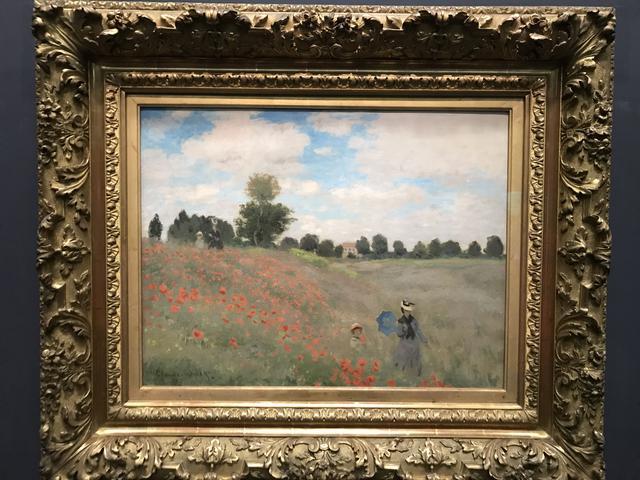Amapolas - The Poppies

"Amapolas - The Poppies" is a masterpiece created by the renowned French artist Claude Monet. This oil painting on canvas, measuring 50cm high x 65cm wide, was first unveiled to the public in 1874 during an exhibition organized by the photographer Nadar. The exhibition took place in the former workshops of Nadar, marking the debut of the impressionist group. Painted in the fall of 1873, "Amapolas" showcases Monet's unique interpretation of the natural world, particularly inspired by the landscapes of Argenteuil where he resided in 1871. The vibrant colors and serene beauty of the fields of wildflowers surrounding the city served as a muse for Monet, influencing not only his artistic vision but also that of his contemporaries.
In this captivating painting, Monet skillfully captures the essence of a leisurely stroll through a field of poppies. The emphasis is not on the figures depicted in the scene, but rather on the interplay of light, color, and atmosphere. The rich palette of reds, greens, and blues creates a sense of movement and vitality, inviting the viewer to immerse themselves in the tranquil setting. Monet's brushstrokes are loose and expressive, embodying the spontaneity and freedom characteristic of the impressionist style.
"Amapolas - The Poppies" is a testament to Monet's pioneering approach to painting en plein air, or outdoors. By venturing outside the confines of the studio, Monet and his fellow impressionists sought to capture the fleeting effects of light and atmosphere in their work. The result is a sense of immediacy and authenticity that distinguishes impressionist art from traditional academic painting. Through "Amapolas," Monet invites us to experience the beauty of nature in all its ephemeral glory, reminding us of the importance of slowing down and appreciating the world around us.
As one of the founding fathers of impressionism, Claude Monet's legacy continues to resonate with art lovers and enthusiasts around the world. "Amapolas - The Poppies" stands as a timeless example of his mastery of color, light, and composition, inviting us to see the world through his eyes. Whether you are a seasoned art connoisseur or a curious traveler exploring the wonders of Paris, a visit to see this iconic painting is sure to leave a lasting impression. Experience the magic of "Amapolas" and discover the beauty of impressionism in the heart of the City of Light.
© ChatGPT 3.5
When Monet arrived in Argenteuil in 1871, it would be a very productive seven years, all supported by Paul Durand-Ruel, and he would move in 1878. Monet arrived in Argentuil with his family, because he did not want to be recruited in the Franco-Prussian War. This period represented a very happy time for the artist and helped lay the foundations of what we know as modern painting.
The characters of the woman and her child strolling through the countryside in this painting, Camille and Jean, his wife and son. Although looking at the picture one could think that it is anyone because the features are not so clear. Camille was his model in several of the artist's works. The characters that appear camouflaged are two more people, who are friends of the artist.
This work was part of the so-called first impressionist exhibition and despite criticism, this group of artists gave six more exhibitions until 1882. Among Monet's colleagues we find Renoir, Sisley and Manet. In fact, Renoir painted it because Monet was a great lover of flowers and the outdoors, which is more than clear in his work.
It was painted around the same time he painted Impression: Dawn.